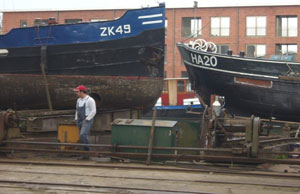Situated in the north, the province borders on the Wadden sea and here seafood – especially shrimps are often found on the menu.
More shrimps are harvested in the waters near the village of Zoutkampf than anywhere else in Europe.
Beef dishes like meatballs or metworst are liberally seasoned with cloves – reminding one of Holland’s colonial history.
Most of the province is rural, which is probably why it is called ‘meat and potatoes’ country.
Where Groniger mosterd, stip (gravy), beans, hence ‘mollebonen’ (salted fried beans), peas, kale and snert (pea soup) are as popular to the locals, as Groninger koek (Groningen cake), oalwievenkouk (old lady’s cake), poffert (type of Gugelhupf), spekdikken (rye pancakes with speck and metworst) and nijjoarsrollechies, (sweet rolls made at New Year).
Rye bread is known as ‘brood’ but ordinary wheat bread is called stoede.
Jenever, the national drink is also the province’s chief beverage.
It was developed around 1600 by a professor from Leyden, Franzikus de Bove.
After the long Spanish occupation, the Dutch had simply had enough of being downtrodden so they made use of the fleets, and trade became extremely profitable with their wealth growing exponentially.
Unfortunately the unhealthy wealthy living was taking it’s toll, so de Bove developed a digestive schnapps from barley, rye, corn and juniper berries which he called Genièvre (French for ‘juniper’) and that became Jenever – now called Genever.
Nowadays the corn flavour is much stronger than the juniper flavour – the difference between jonge Genever and oude Genever has absolutely nothing to do with the age, only with the method of distillation.

